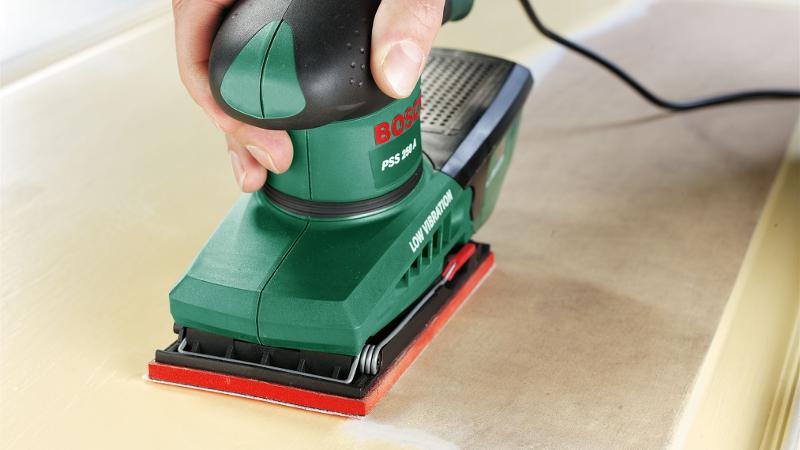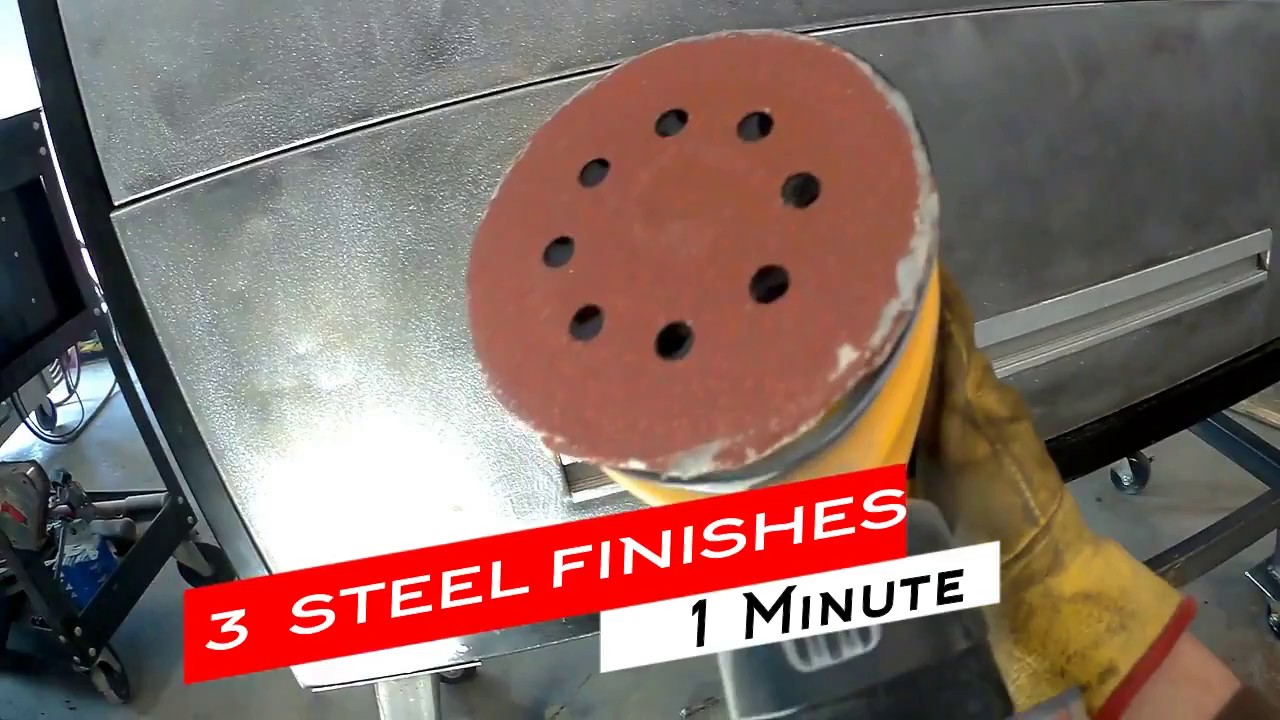Have you ever wondered if you can use an orbital sander on metal? Well, you’re in the right place to find out! In this article, we’ll explore the answer to this question and give you all the information you need. So, grab your safety goggles and let’s dive in!
If you’re a DIY enthusiast or someone who loves working with different materials, knowing the capabilities of your tools is essential. When it comes to an orbital sander, it’s commonly used for woodworking projects, but can it handle metal too? Let’s uncover the truth and discover whether an orbital sander is a metalworker’s best friend or not.
When it comes to sanding metal, there are a few factors to consider before using an orbital sander. We’ll explain them all in detail and provide you with some tips and tricks along the way. So, if you’re curious about this topic, keep reading to find out everything you need to know about using an orbital sander on metal!
Orbital sanders are mainly designed for wood, but they can also be used on metal surfaces. However, there are a few important considerations to keep in mind. Firstly, use a sanding disc specifically designed for metal. Additionally, ensure that the sander has adjustable speed settings to prevent damage to the metal. Finally, be cautious of heat buildup and use appropriate cooling measures. By following these guidelines, you can effectively use an orbital sander on metal.

Can You Use an Orbital Sander on Metal?
When it comes to sanding, most people think of wood as the primary material. However, there may be instances where you need to sand metal surfaces. In such cases, you might wonder if you can use an orbital sander, which is commonly used for woodworking projects, on metal. In this article, we will explore whether an orbital sander is suitable for metal surfaces, its advantages and disadvantages compared to other sanders, tips for achieving the best results, and safety precautions to keep in mind.
The Basics of Using an Orbital Sander on Metal
Using an orbital sander on metal can be done, but it requires some precautions and considerations. The first thing to keep in mind is that an orbital sander is primarily designed for sanding wood and other soft materials. Metal, on the other hand, is a harder and more abrasive material. This means that an orbital sander may not be as effective or efficient when used on metal, especially if you’re dealing with rough or uneven surfaces.
However, if you do decide to use an orbital sander on metal, there are a few key considerations to keep in mind. First, make sure to use the appropriate sanding discs or pads specifically designed for metal. These discs or pads will typically be made of materials such as aluminum oxide or silicon carbide, which are better suited for metal surfaces. Additionally, it’s important to adjust the speed and pressure of the sander, as too much pressure can damage the metal surface or result in uneven sanding.
The Advantages of Using an Orbital Sander on Metal
While an orbital sander may not be the ideal tool for sanding metal, it does offer some advantages in certain situations. One of the main advantages of using an orbital sander on metal is its versatility. Orbital sanders come in different sizes and power levels, allowing you to choose the right tool for your specific metal sanding needs. They also provide a smooth and consistent sanding action, which can be helpful for achieving an even finish on metal surfaces.
Another advantage of using an orbital sander on metal is its dust collection system. Most orbital sanders are equipped with a built-in dust collection bag or port that helps capture and contain the dust generated during sanding. This can make the sanding process cleaner and more efficient, reducing the need for frequent cleanups and minimizing the health risks associated with metal dust.
The Disadvantages of Using an Orbital Sander on Metal
While an orbital sander can be used on metal surfaces, it’s worth considering the disadvantages as well. One of the main drawbacks is the limited sanding power of an orbital sander compared to other specialized metal sanders, such as belt sanders or angle grinders. These tools are specifically designed for heavy-duty metal sanding and can remove material more aggressively. If you’re dealing with thick layers of paint, rust, or other stubborn coatings on metal, an orbital sander may not be the most efficient choice.
Another disadvantage of using an orbital sander on metal is the risk of creating swirl marks or scratches on the surface. Orbital sanders have a circular sanding motion, which can leave circular marks on metal if not used correctly. To minimize this risk, it’s important to maintain a consistent sanding motion, use the right grit sandpaper, and avoid applying excessive pressure. It’s also a good idea to test the sander on a small, inconspicuous area of the metal surface before proceeding with the entire project.
Tips for Using an Orbital Sander on Metal
Now that you know the advantages and disadvantages of using an orbital sander on metal, here are some tips to help you achieve the best results:
- Use the appropriate sanding discs or pads specifically designed for metal surfaces.
- Start with a low grit sandpaper to remove any rough or uneven areas, then gradually move to higher grits for a smoother finish.
- Apply consistent pressure and maintain a steady sanding motion to avoid creating swirl marks or scratches.
- Keep the sander moving at all times to prevent overheating and damaging the metal surface.
- Wear appropriate safety gear, including goggles, a dust mask, and gloves, to protect yourself from metal dust and debris.
- Regularly clean the dust collection bag or port to ensure efficient dust removal.
When to Consider Other Sanding Options
While an orbital sander can be used on metal surfaces, there are instances where other sanding options may be more suitable. If you’re dealing with heavy-duty metal sanding tasks, such as removing thick layers of paint or rust, it’s recommended to use a belt sander or an angle grinder. These tools offer more power and aggression, making them better equipped to handle tough metal sanding jobs. Additionally, for precision sanding or reaching tight spaces, you may consider using specialized hand tools like files or sanding blocks.
The Importance of Safety
Before using any power tool, including an orbital sander, it’s crucial to prioritize safety. When sanding metal surfaces, be sure to wear protective goggles to shield your eyes from flying debris, a dust mask to prevent inhaling metal dust, and gloves to protect your hands from sharp edges. Additionally, make sure to work in a well-ventilated area to minimize the inhalation of fumes, and always read and follow the manufacturer’s instructions for safe operation of the orbital sander.
In Summary
While an orbital sander may not be the ideal tool for sanding metal, it can still be used with proper precautions and considerations. Its versatility, smooth sanding action, and dust collection system make it a viable option for various metal sanding tasks. However, it’s important to keep in mind the limitations of an orbital sander, such as its limited power and the risk of creating swirl marks. By following the tips provided and being aware of alternative sanding options for specific metal projects, you can achieve satisfying results while prioritizing safety.
Can You Use an Orbital Sander on Metal?
- Yes, you can use an orbital sander on metal.
- Make sure to use the appropriate sandpaper grit for metal surfaces.
- Start with a lower grit to remove any rust or paint from the metal.
- Gradually increase the grit to achieve a smooth finish.
- Always wear protective gear like goggles and a face mask when sanding metal.
Frequently Asked Questions
Are you curious about using an orbital sander on metal? Explore these commonly asked questions to find out more!
1. What is an orbital sander and how does it work?
An orbital sander is a power tool used for sanding and smoothing different surfaces. It features a round sanding pad that moves in an orbital motion, meaning it spins in circles and oscillates back and forth. This unique motion helps to minimize swirl marks on your workpiece, resulting in a smoother finish.
Orbital sanders are typically used on wood surfaces, but there are some models specifically designed for metal. These metal-friendly orbital sanders have features like variable speed settings and vibration reduction to ensure effective sanding without damaging the metal surface.
2. Can you use an orbital sander on metal?
Yes, you can use an orbital sander on metal, but it’s important to use the right type of sander and suitable sandpaper for the job. Ordinary orbital sanders that are primarily designed for wood may not be suitable for metal surfaces.
When sanding metal, it’s crucial to use a model specifically designed for metalworking or one that offers metal-compatible features. Additionally, you’ll need to use sandpaper with an appropriate grit for metal to achieve desired results. Always ensure you follow the manufacturer’s recommendations and guidelines for sanding metal surfaces safely and effectively.
3. What are the benefits of using an orbital sander on metal?
Using an orbital sander on metal provides several benefits. Firstly, it helps to remove rust, paint, and other surface imperfections, preparing the metal for a fresh coat of paint or polishing. It saves time and effort compared to manual sanding.
Orbital sanders also offer consistent and even sanding results, leaving a smooth and uniform finish on the metal surface. The orbital motion helps to prevent swirl marks and gouges, providing a higher-quality result.
4. Are there any precautions to consider when using an orbital sander on metal?
Yes, there are a few precautions to keep in mind when using an orbital sander on metal. Firstly, ensure you wear appropriate safety gear such as safety glasses and a dust mask to protect yourself from flying debris and metal dust.
It’s also important to use the correct grit sandpaper suitable for metal surfaces. Starting with a coarse grit and gradually moving to finer grits will help you achieve the desired finish without damaging the metal. Always follow the manufacturer’s guidelines and recommendations for the specific orbital sander you’re using.
5. Can an orbital sander be used for polishing metal?
Yes, an orbital sander can be used for polishing metal, but you’ll need to use the appropriate polishing accessories. Instead of using sandpaper, switch to special polishing pads or bonnets designed for metal polishing. These attachments help remove scratches, swirl marks, and oxidation from the metal surface, leaving it shiny and polished.
It’s important to note that not all orbital sanders are designed for polishing, so make sure to check if your sander has a polishing capability or if there are compatible accessories available. Additionally, be cautious and start with a lower speed setting to avoid overheating or damaging the metal surface during the polishing process.

Orbital Sander Basics | Beginner Tool
Summary
So, can you use an orbital sander on metal? The answer is yes, with caution. While an orbital sander can be used on metal, it’s important to choose the right sanding pads, use the appropriate speed setting, and apply light pressure.
Metal surfaces can be sensitive, and the wrong technique or excessive pressure can lead to damage. It’s also important to wear safety goggles and a mask to protect yourself from sparks and metal dust. So, go ahead and use an orbital sander on metal, but remember to take the necessary precautions and handle it with care.
